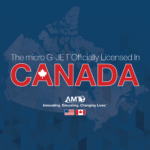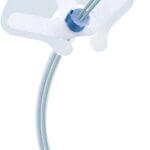A Quick Guide to Nasopharyngeal Airway Devices
In critical care scenarios, establishing and maintaining an open airway is paramount for proper ventilation and oxygenation. Nasopharyngeal airway devices have become indispensable tools, offering a straightforward yet highly effective solution to prevent airway obstruction in unconscious or semi-conscious patients with an intact gag reflex.
The Anatomy of an Airway Lifeline
Nasopharyngeal airway devices are hollow plastic or rubber tubes designed to bypass the tongue and maintain an open airway passage. When gently inserted through the nasal cavity, they extend into the posterior pharynx, creating a clear channel for airflow. Their flexible construction aims to minimize trauma during insertion and removal.
The Role of Nasopharyngeal Airways in Airway Management
Nasopharyngeal airway devices play a vital role in airway management. They can serve as a temporary measure before obtaining a more secure airway via intubation or until the patient can breathe independently. They are particularly useful in emergency and critical care settings and in situations where a patient’s airway is difficult to access or manage.
Additionally, nasopharyngeal airway devices are often used as a preparatory step before nasotracheal intubation, especially in oral and maxillofacial surgery, as they can improve the ease of tube insertion and minimize bleeding during the procedure.
A Versatile Solution for Diverse Needs
Nasopharyngeal airway devices come in various sizes to accommodate different patient populations, from pediatric to adult. The appropriate size is crucial to ensure optimal airway patency and prevent complications.
Beyond their primary function of maintaining an open airway, nasopharyngeal airway devices offer a range of benefits that make them invaluable tools in critical care settings:
- Rapid Establishment of a Patent Airway:
Nasopharyngeal airway devices can quickly secure an open airway in unconscious patients or those with an intact gag reflex. This rapid intervention is crucial in emergency situations where time is of the essence.
- Minimally Invasive Character:
Nasopharyngeal airways are less invasive than more advanced airway management techniques. This minimizes the risk of complications such as trauma or infection, making them a safer option for many patients.
- Prevention of Airway Obstruction:
These devices effectively prevent airway obstruction caused by the tongue falling back into the pharynx. This is particularly important in patients with reduced consciousness or muscle tone, ensuring continuous airflow.
- Compatibility with Other Airway Management Devices:
Nasopharyngeal airways can be used in conjunction with other airway management tools, such as bag-valve masks. This compatibility enhances their utility in various emergency and clinical scenarios.
- Utility in Difficult Mouth Access:
In situations where a patient’s mouth is difficult to open or access, such as cases of trismus (lockjaw) or angioedema (swelling of the mucous membranes), nasopharyngeal airways provide a practical alternative for maintaining airway patency.
- Cost-Effectiveness and Wide Availability:
Nasopharyngeal airway devices are generally cost-effective and widely available across different healthcare settings. Their affordability and accessibility make them an essential component of emergency care kits and critical care environments.
Overall, the versatility, ease of use, and effectiveness of nasopharyngeal airway devices make them a preferred choice for healthcare providers managing airway emergencies.
Proper Insertion and Management Techniques
While nasopharyngeal airway devices are relatively simple, proper insertion and management techniques are crucial to ensure efficacy and minimize potential complications. Below are general steps, although they are not intended to be instructions for use or medical advice.
- Select the appropriate size based on the patient’s age, size, and anatomy.
- Lubricate the nasopharyngeal airway device with a water-soluble lubricant or anesthetic jelly to facilitate smooth insertion and reduce trauma.
- Gently insert the nasopharyngeal airway device through the nasal passage, following the natural curvature of the nasopharynx and directing it along the nasal floor.
- Advance the nasopharyngeal airway device until the flange rests against the nostril, ensuring the tip is positioned in the posterior pharynx.
- Secure the nasopharyngeal airway device in place using appropriate methods, such as tape or a device holder.
- Regularly assess and manage potential complications like nasal bleeding, obstruction, or dislodgement.
Innovative Solutions: AMT’s IntelAir™
While traditional nasopharyngeal airway devices have proven their efficacy, medical device manufacturers continue to innovate and introduce advanced solutions to enhance patient comfort, reliability, and procedural efficiency.
One such innovation is AMT’s IntelAir™ device, which aims to revolutionize airway management through its cutting-edge features:
- Patient Comfort Considerations: The IntelAir™ boasts an anatomically contoured shape designed to reduce potential trauma during insertion, striving to provide a smoother patient experience.
- Reliable Securement: The device utilizes a gentle skin adhesive and secure anchoring system to prevent unintended tube migration during procedures, enabling consistent oxygenation and capnography monitoring.
- Integrated Workflow: The IntelAir™ integrates airway management, oxygen delivery, and capnography sampling into a single device, streamlining procedures for ease of use.
The Future of Airway Management
As medical technology continues to evolve, the role of nasopharyngeal airway devices in emergency and critical care medicine remains vital. By understanding their benefits and proper insertion techniques, healthcare professionals can establish and maintain a patent airway, ensuring optimal ventilation and oxygenation for their patients.
With their proven efficacy, ease of use, and potential for further innovation, nasopharyngeal airway devices are essential instruments in the ever-evolving quest to protect and preserve the most fundamental human need—the ability to breathe.
Disclaimer: Anything contained in this blog is general information only and is not, nor should it be interpreted to be, medical advice. Always consult with a qualified physician and/or a health care provider for medical advice.
References:


